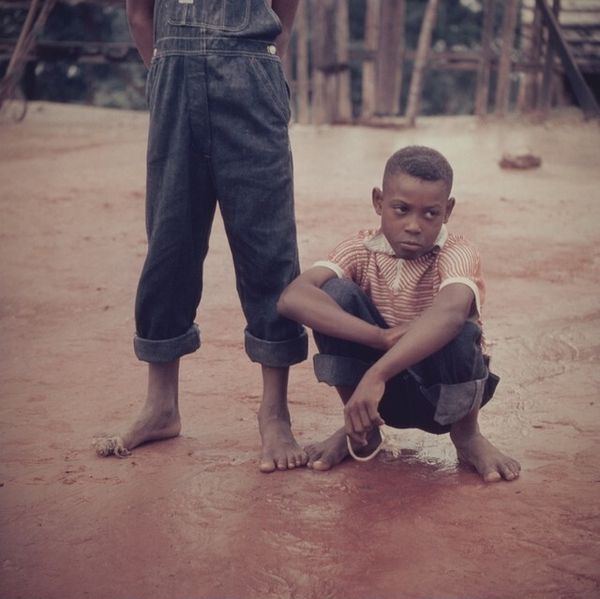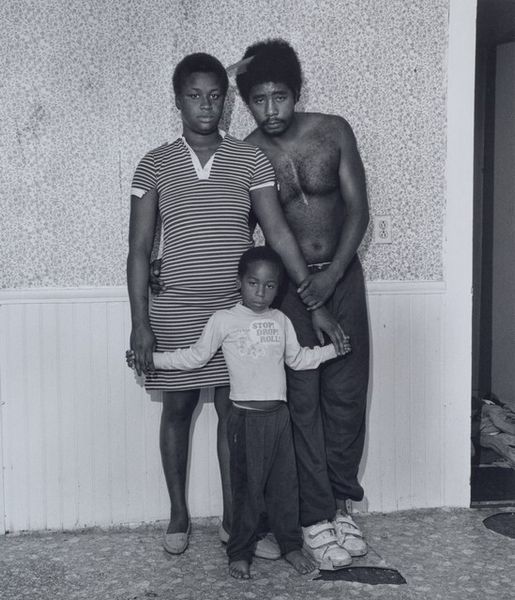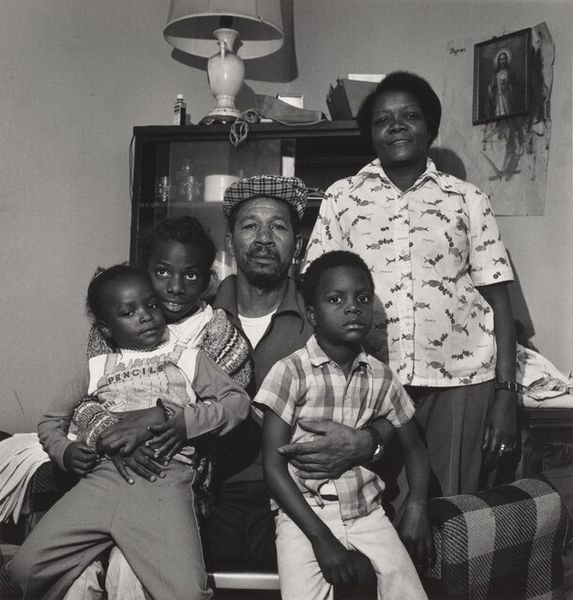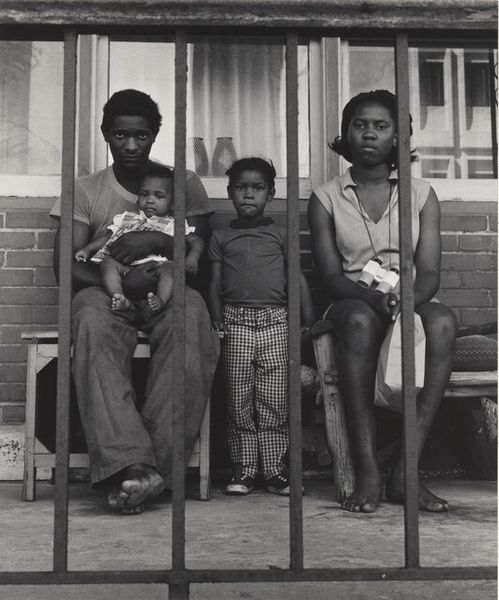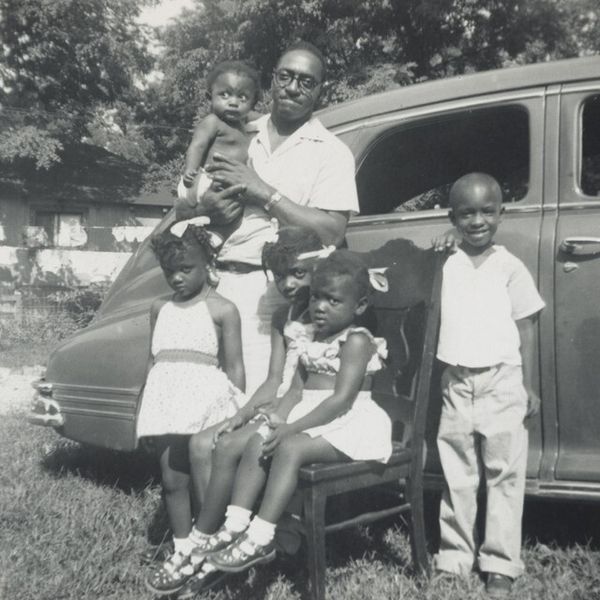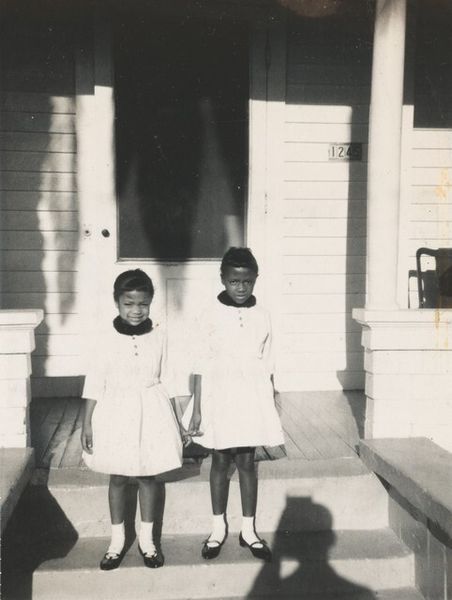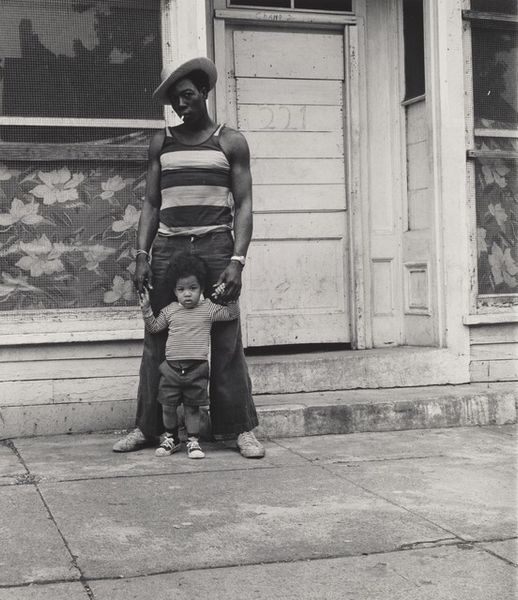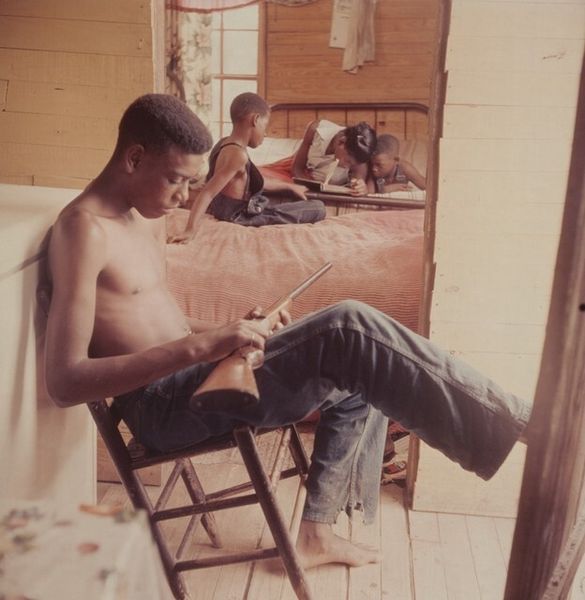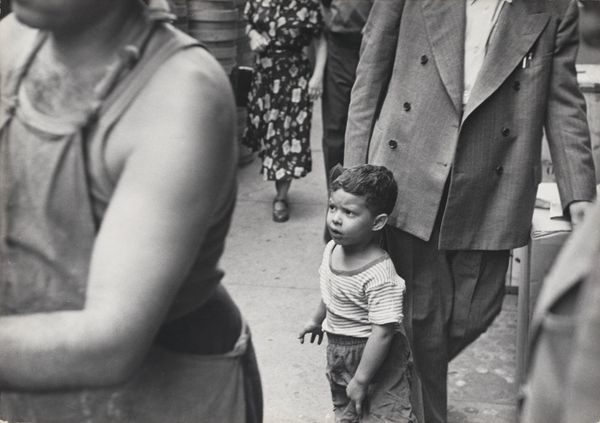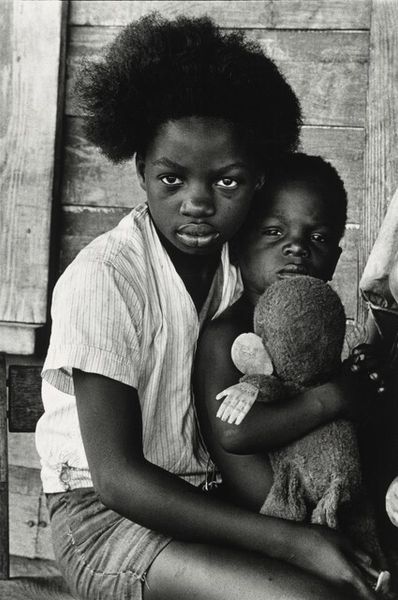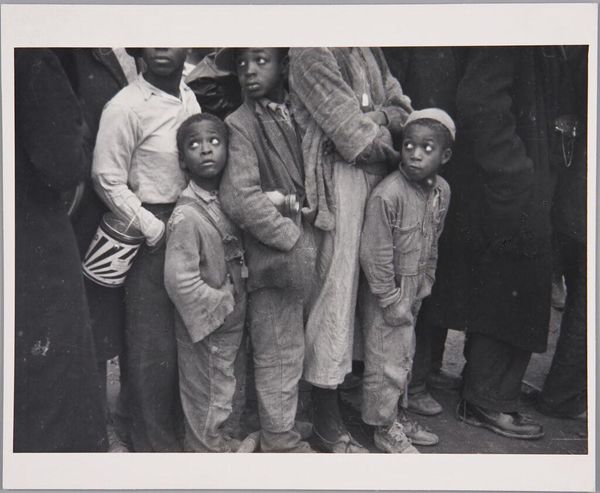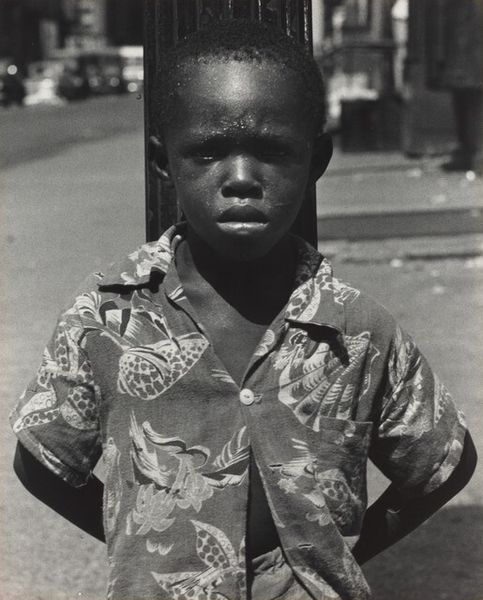
c-print, photography
#
portrait
#
c-print
#
candid portrait
#
social-realism
#
photography
#
genre-painting
Dimensions: sheet: 40.5 × 50.8 cm (15 15/16 × 20 in.) image: 39.2 × 49.5 cm (15 7/16 × 19 1/2 in.)
Copyright: National Gallery of Art: CC0 1.0
Editor: Here we have Gordon Parks' "Child in Mobile, Alabama," a C-print from after 1956. I’m struck by the direct gaze of the girl in the foreground. What stories do you think Parks is trying to tell us here? Curator: Well, considering Parks’ commitment to social realism, this isn't just a portrait; it's a commentary on the experience of African Americans in the South during the Civil Rights era. The girl's expression, coupled with the setting, suggests a certain vulnerability but also resilience. Editor: Resilience, yes. It's in her eyes. What about the choice to depict her with other children and that older model car in the background? Curator: Precisely! The other children add a layer of community and shared experience. The car…that could symbolize aspiration, a desire for upward mobility, or perhaps a nod to the limited resources available to African American families at the time. Think about how images like this challenged dominant narratives and contributed to the broader Civil Rights movement. Did the museums and galleries displaying images such as this actively endorse that cause, or merely expose viewers to its visual rhetoric? Editor: It makes you wonder about the role of photography in shaping public opinion during such a politically charged era. Did the intentional composition help deliver Parks’ message to its intended audience? Curator: Absolutely. The composition, the lighting, the carefully chosen details - all served to humanize the subject and challenge the prejudiced stereotypes circulating at the time. Photography, exhibited thoughtfully, can function as powerful tool of political agency. Editor: It's a lot to consider…how an image like this one functions within historical and social contexts. I'll never see it the same way again. Curator: Exactly. Art doesn’t exist in a vacuum. Its value comes, in part, from its impact on how we think and feel about the world.
Comments
No comments
Be the first to comment and join the conversation on the ultimate creative platform.
